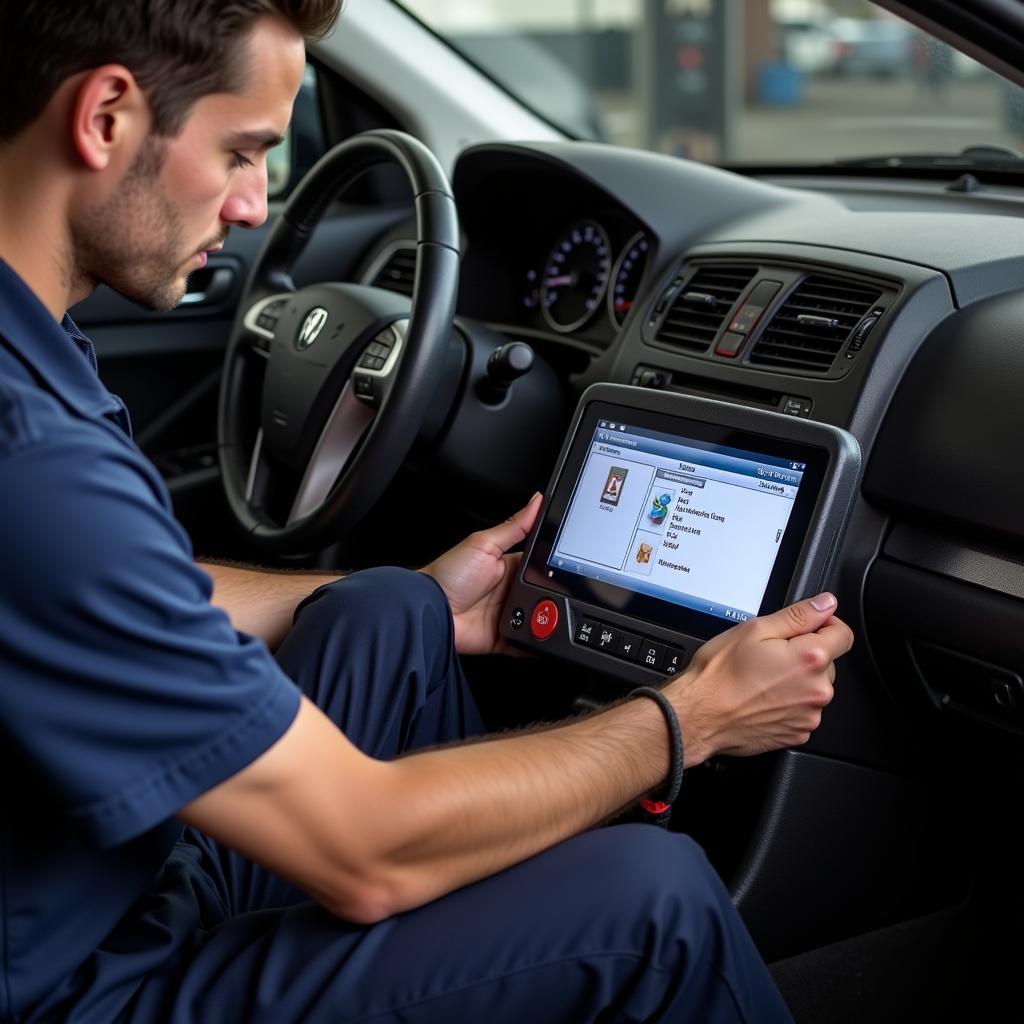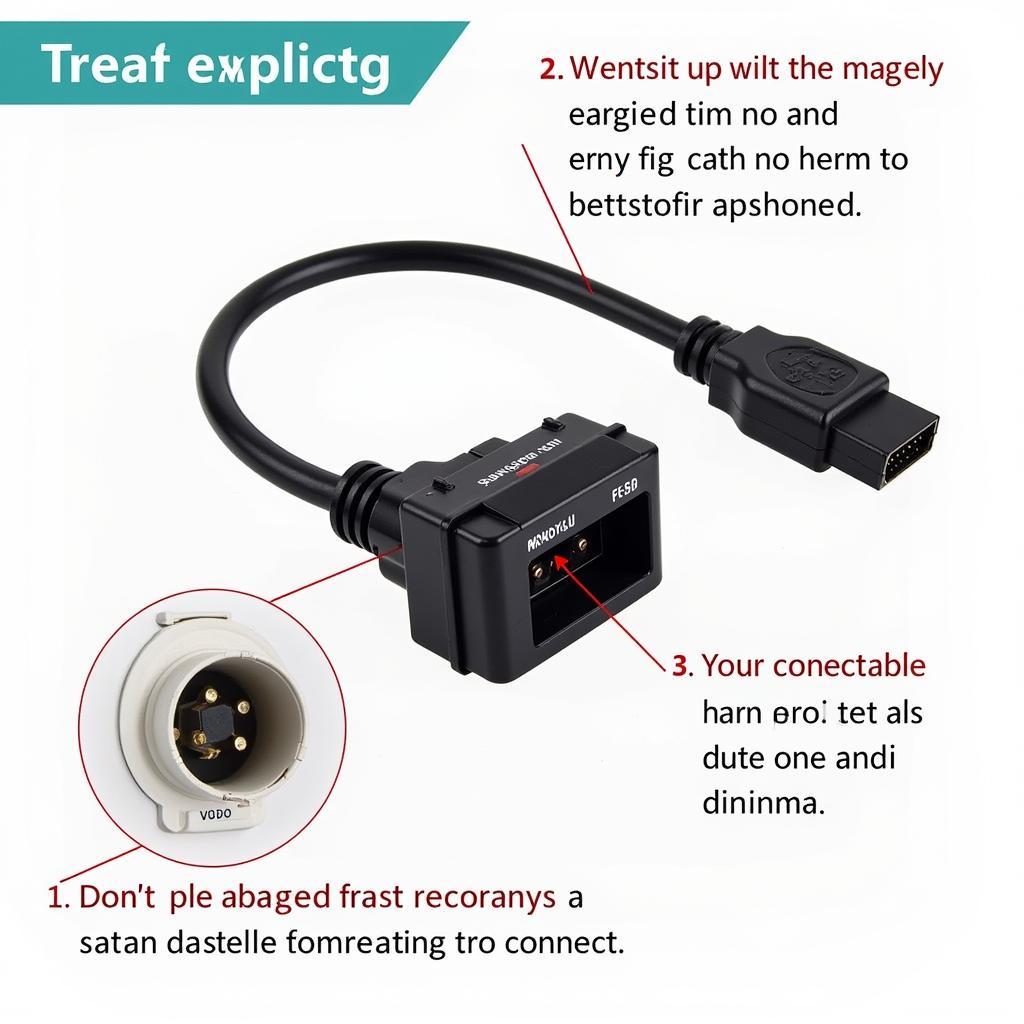Can VCDS Lite do a throttle body adjustment? This is a common question among VW and Audi owners. Let’s explore the capabilities of VCDS Lite when it comes to this essential maintenance procedure. We’ll delve into the specifics of throttle body adaptation, the limitations of the Lite version, and alternative solutions.
Understanding Throttle Body Adaptation
Your car’s throttle body is a crucial component that controls the airflow into the engine. Over time, carbon buildup and other factors can affect its performance. A throttle body adaptation, sometimes referred to as a throttle body alignment or basic setting, recalibrates the throttle body’s position sensors, ensuring optimal engine performance and preventing issues like rough idling, poor acceleration, and even the dreaded check engine light.
Why is Throttle Body Adjustment Important?
A correctly adjusted throttle body ensures the engine receives the correct amount of air, leading to smoother idling, improved fuel economy, and optimal power delivery. Without periodic adaptation, you might experience performance issues and decreased efficiency.
How Does a Throttle Body Adaptation Work?
The adaptation process involves using diagnostic software to command the throttle body to move to its fully open and closed positions. This allows the engine control unit (ECU) to relearn the throttle body’s position, ensuring accurate control of the airflow.
VCDS Lite and Throttle Body Adjustment: The Limitations
While VCDS Lite is a valuable tool for basic diagnostics and some coding procedures, it unfortunately has limitations regarding throttle body adaptation. The full version of VCDS (VAG-COM) is required for this procedure. VCDS Lite can read fault codes and provide some basic information about your vehicle, but it lacks the advanced functions necessary to perform the adaptation.
What Can VCDS Lite Do?
VCDS Lite is a powerful tool for reading and clearing diagnostic trouble codes (DTCs) and accessing some measuring block data. This allows you to identify potential issues and monitor sensor readings, but it falls short when it comes to complex procedures like throttle body adaptation.
Alternatives to VCDS Lite for Throttle Body Adjustment
If you don’t have access to the full version of VCDS, you have a few options:
- Invest in VCDS: Purchasing the full version of VCDS is a worthwhile investment, especially if you plan on performing more advanced diagnostics and coding on your VW or Audi. It offers a comprehensive set of features and allows for procedures like throttle body adaptation.
- Professional Mechanic: A qualified mechanic with access to the necessary diagnostic tools can perform the throttle body adaptation for you. This is often the quickest and easiest option if you’re not comfortable working on your car yourself.
- OBD-II Scanners with Adaptation Capabilities: Some advanced OBD-II scanners on the market offer throttle body adaptation functionality. Research carefully to ensure compatibility with your specific vehicle model.
 Mechanic Performing Throttle Body Adaptation
Mechanic Performing Throttle Body Adaptation
Can You Adjust the Throttle Body Manually?
Manually adjusting the throttle body is not recommended. Modern vehicles rely on precise electronic control, and tampering with the throttle body can lead to serious issues and damage. Always use the appropriate diagnostic software or consult a qualified mechanic.
“Using the correct diagnostic software is crucial for ensuring accurate throttle body adaptation,” says John Smith, Senior Automotive Diagnostic Technician at Smith Automotive. “Attempting manual adjustments can disrupt the delicate balance of the engine management system and lead to further problems.”
Conclusion: VCDS Lite and Throttle Body Adjustment
While VCDS Lite is a handy tool for basic diagnostics, it cannot perform a throttle body adjustment. You’ll need the full version of VCDS, an alternative diagnostic tool with adaptation capabilities, or the services of a professional mechanic. Addressing throttle body issues promptly can prevent more significant problems down the road, ensuring your VW or Audi continues to run smoothly and efficiently. Remember, a well-maintained throttle body is key to optimal engine performance.
FAQ
- What are the symptoms of a faulty throttle body? Rough idling, poor acceleration, hesitation, and a check engine light are common indicators.
- How often should a throttle body be cleaned? Every 30,000 to 50,000 miles is a good rule of thumb.
- Is a throttle body adaptation necessary after cleaning? Yes, it’s recommended to perform an adaptation after cleaning or replacing the throttle body.
- Can I drive with a faulty throttle body? While possible, it’s not recommended as it can lead to decreased performance and potential damage.
- What is the cost of a throttle body adaptation at a mechanic? Prices vary, but typically range from $50 to $150.
- What are the benefits of a throttle body adaptation? Smoother idling, improved fuel economy, and optimized power delivery.
- Can a throttle body adaptation fix all engine performance issues? No, it addresses only issues related to the throttle body itself.
Related Articles
- Understanding Diagnostic Trouble Codes (DTCs)
- A Guide to Using VCDS for Beginners
- Common VW/Audi Engine Problems and Solutions
Need Help? Contact us via Whatsapp: +1 (641) 206-8880, Email: CARDIAGTECH[email protected] or visit us at 276 Reock St, City of Orange, NJ 07050, United States. We have a 24/7 customer support team.

